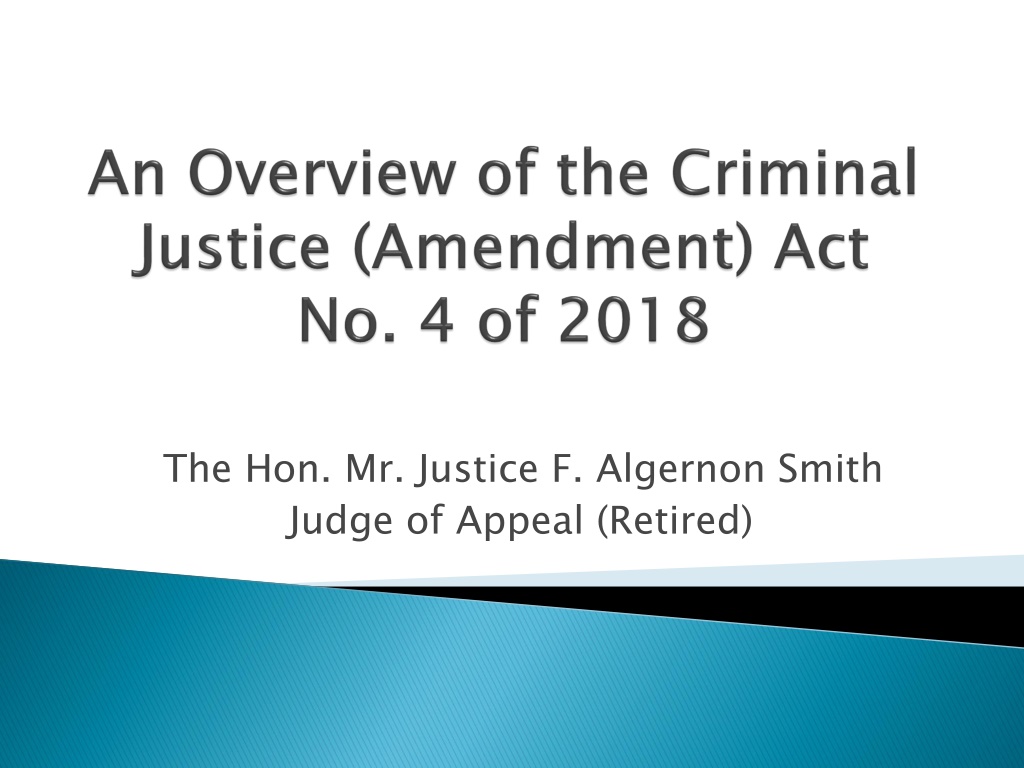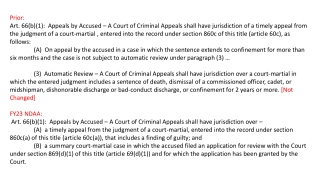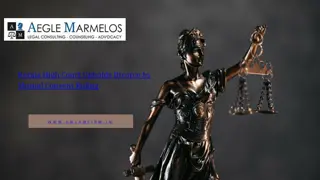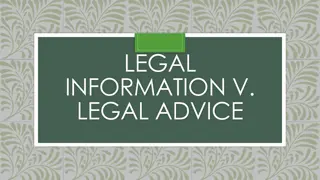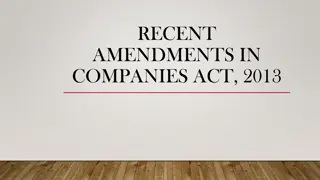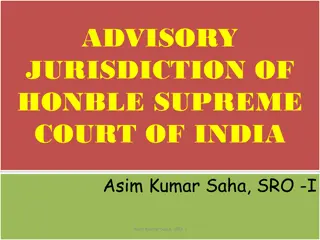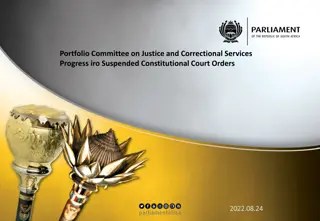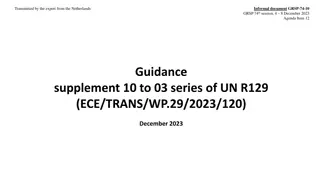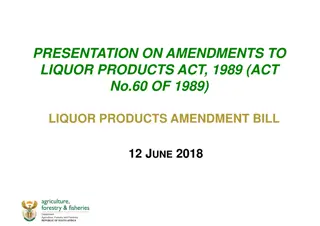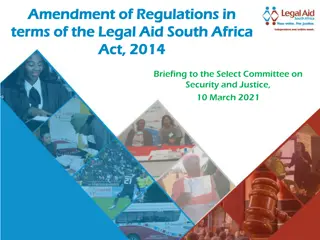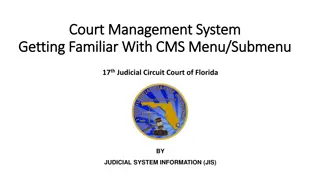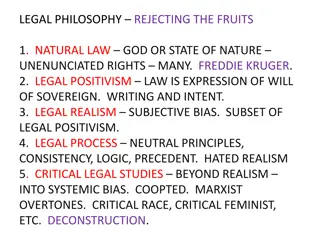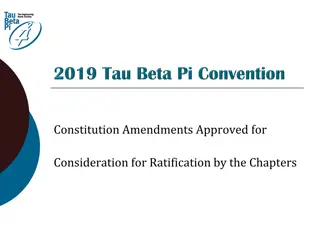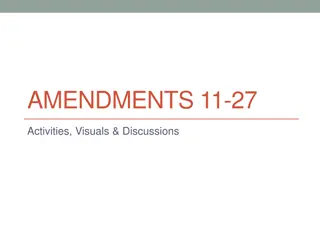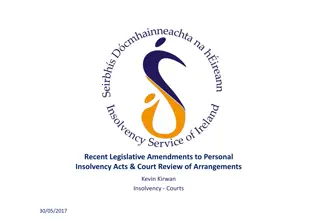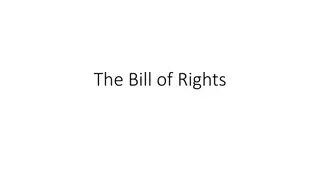Legal Amendments and Court Procedures Overview
The content provides insights into legal amendments and court procedures, including the amendment of Section 22, dealing with joint trials of offenses, the necessity of orders for indictment trials, and the discussion surrounding summary trials. It also highlights the Indictments (Amendment) Act of 2018 and the principles governing the joinder of offenses.
Download Presentation

Please find below an Image/Link to download the presentation.
The content on the website is provided AS IS for your information and personal use only. It may not be sold, licensed, or shared on other websites without obtaining consent from the author. Download presentation by click this link. If you encounter any issues during the download, it is possible that the publisher has removed the file from their server.
E N D
Presentation Transcript
The Hon. Mr. Justice F. Algernon Smith Judge of Appeal (Retired)
s. 22 of the principal act is amended by deleting subsection (2) and inserting in its place a new subsection (2)
Subsection (2) deals with joint trial of offences. All categories of offences triable in the Parish Court may now be tried together Decisions in R v 12 JLR 139 and R v King Harvey 1934 and Lee 19 JLR 61 no longer applicable R v Radolph Radolph Brown Brown 12 JLR 139 and R v King Harvey 1934- -5 JLR 80 and R v Alexander and Lee 19 JLR 61 no longer applicable 5 JLR 80 and R v Alexander
The Act stipulates that trial shall be on indictment Difficulty arises where only special summary and Petty session summary offences are involved By s.272 of the Judicature (Parish Court) Jurisdiction Act an order signed by the Parish judge and endorsed on information charging an indictable offence is a sine qua non to the founding of an indictment in the parish court.
In Chief Constable of Norfolk Clayton [1983] 2 A.C 473 said that rules of procedure and practice which encourage the attainment of justice should be encouraged. Suggested that where no indictable offences are involved trial should be summary. Chief Constable of Norfolk Clayton [1983] 2 A.C 473 it was
The Indictments (Amendment) Act No. 5 of 2018 (compared with section 22 (2) (a)) This Act amended rule 3 by inserting after character the words or are so connected as to form part of the same transaction .
The principles governing joinder of offences pursuant to rule 3 as amended are the same as those applicable to joinder under the new s.22 (2)(a) of The Criminal Justice (Amendment) Act.
Committed in the course same transaction (1969) 11 JLR 455 Committed in the course of the same transaction R v Traille of the Connected as to form part of the same transaction is continuity of action i.e. the following up of some initial act through until the series of acts come to an end. Connected as to form part of the same transaction - - the main test
Founded on the same facts this means having the same factual genesis. The question is whether the charges have a common factual origin see R V Barrel and Wilson (1979) 69 Cr. App R. 280 Founded on the same facts R V Barrel and Wilson (1979) 69 Cr. App R. 280
Form part of a series of offences of the same or similar character whether there is sufficient nexus between the offences see for example Dennis Campbell 12 JLR 736 and Andrew Ferrell v R [2010] UKPC 20 Form part of a series of offences of the same or similar character - - the question is Dennis Campbell 12 JLR 736 and Andrew Ferrell v R [2010] UKPC 20
Arise out of a single act or series of acts So connected as to form part of the same transaction (see above) OR A single act or series of acts of such a nature that it is doubtful which of several offences the facts which can be proved will constitute, and a person is charged with each or any of such offences. Arise out of a single act or series of acts So connected as to form part of the same transaction (see above) OR A single act or series of acts of such a nature that it is doubtful which of several offences the facts which can be proved will constitute, and a person is charged with each or any of such offences.
Joinder summary offences Subsection (1) (a) deals with similar offences committed in the course of the same transaction and subsection (1) (c) deals with different offences committed in the course of the same transaction or arising out of the same facts or closely connected facts. Joinder of offenders charged with summary offences of offenders charged with
At common law where persons are charged with similar offences and the facts are sufficiently connected and it is fair and just to do so they may be tried at the same time. See Chief Constable of Norfolk Clayton [1983] 2 A.C 473 Chief Constable of Norfolk Clayton [1983] 2 A.C 473
